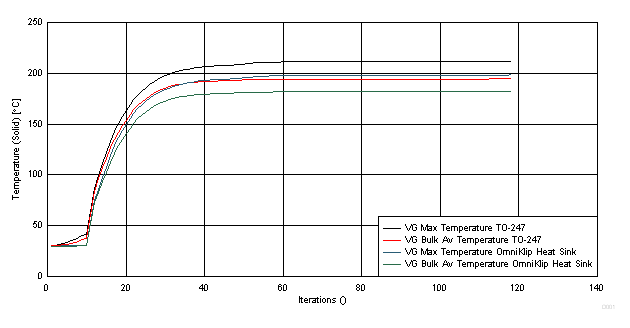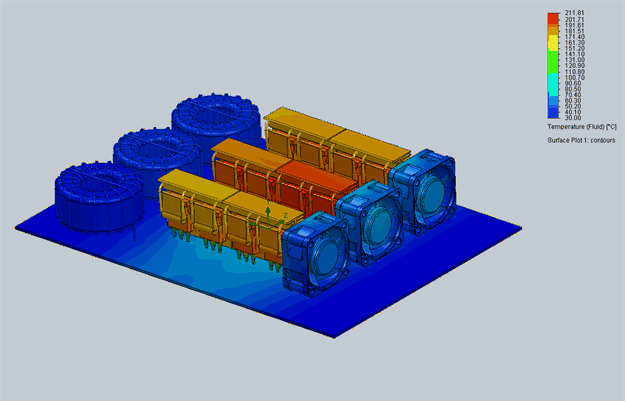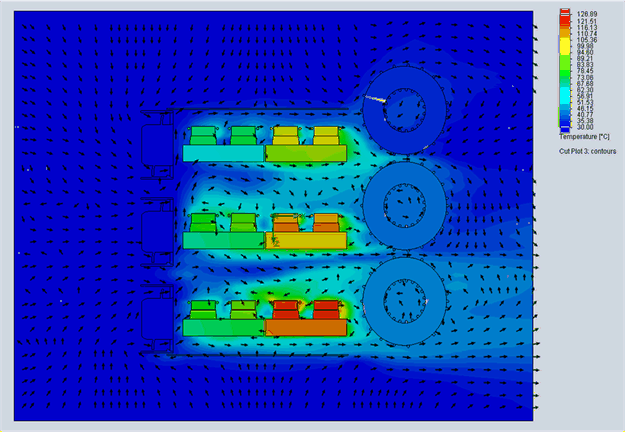JAJU510H March 2018 – December 2022
- 概要
- リソース
- 特長
- アプリケーション
- 5
- 1System Description
- 2System Overview
-
3Hardware, Software, Testing Requirements, and Test Results
- 3.1 Required Hardware and Software
- 3.2 Testing and Results
- 4Design Files
- 5Trademarks
- 6About the Authors
- 7Revision History
2.3.1.6 Thermal Considerations
The loss estimations can also allow the heat output of the design to be characterized. Any electrical loss in the system is converted to waste heat.
Thermal simulations where performed using the physical layout of the design, as well as the expected energy losses. An off the shelf heat sink from Wakefield-Vette (OMNI-UNI-18-50) was selected to simplify the design process and provide a starting reference point for understanding the thermal performance. Use this data as a starting point for a thermal design, and not a fully-validated design.
The system was simulated using a worse-than-calculated thermal output of 10 W per switching device. This meant 120 W of total power dissipation across all three phases. Figure 2-33 and Figure 2-34 show the thermal simulation results with no fans.
 Figure 2-33 Simulated Temperature vs Time
Figure 2-33 Simulated Temperature vs Time Figure 2-34 Passive Thermal Simulation Result
Figure 2-34 Passive Thermal Simulation ResultIn this simulation, with only natural convection and small off the shelf heat sinks, the TO-247 package of the MOSFETs reaches a maximum temperature of 215°C, and the SiC MOSFET reaches 197°C. These temperatures are both outside the maximum allowed temperature range of the devices.
Figure 2-35 shows the next simulation, which includes active airflow and full ducting of the heat generating devices. This airflow reduces the maximum temperature of the MOSFET under a 130% load to be 130°C. This temperature is within the design constraint of the 175°C junction temperature of the C3M0060065D, which is the major heat generator. Please contact wakefield-Vette for details on the thermal simulation.
 Figure 2-35 Active Ducted Thermal Simulation
Figure 2-35 Active Ducted Thermal Simulation